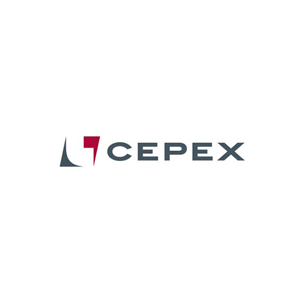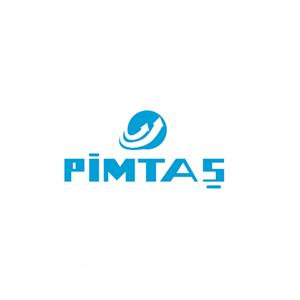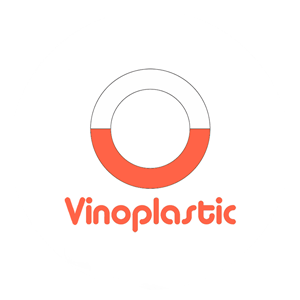UPVC pipes have, from the early decades of the twentieth century to the present, played a key role in the evolution of polymer technology and still remain an integral part of fluid transmission networks, urban infrastructure, and industrial processes. These pipes are made from unplasticized polyvinyl chloride; a polymer which, with the complete removal of plasticizers, develops a crystalline, rigid structure and becomes resistant to chemical and mechanical erosion. In this content, with a comprehensive approach, all the technical, standard, implementation, and environmental aspects of this product group are examined so that engineers, network designers, builders, and investors can make documented strategic decisions on both small and large scales.
Life-cycle and durability against aggressive agents
The strategic advantage of UPVC is not only its high initial stiffness but also the stability of its properties over a long service life. Field surveys on water mains installed in the 1970s show that the ring stiffness index of these pipes is still above 80% of the original nominal value after five decades; a figure that drops below 50% for coated steel in just over thirty years. The main reason for this stability is the chlorine–carbon bonds with bond energy greater than 335 kJ/mol, which do not readily undergo hydrolysis in alkaline and acidic environments. The hydraulic roughness coefficient of 0.009 also remains constant over the entire operating period, minimizing head loss due to scaling.
UPVC pipes have, from the early decades of the twentieth century to the present, played a key role in the evolution of polymer technology and still remain an integral part of fluid transmission networks, urban infrastructure, and industrial processes. These pipes are made from unplasticized polyvinyl chloride; a polymer which, with the complete removal of plasticizers, develops a crystalline, rigid structure and becomes resistant to chemical and mechanical erosion. In this content, with a comprehensive approach, all the technical, standard, implementation, and environmental aspects of this product group are examined so that engineers, network designers, builders, and investors can make documented strategic decisions on both small and large scales.
Life-cycle and durability against aggressive agents
The strategic advantage of UPVC is not only its high initial stiffness but also the stability of its properties over a long service life. Field surveys on water mains installed in the 1970s show that the ring stiffness index of these pipes is still above 80% of the original nominal value after five decades; a figure that drops below 50% for coated steel in just over thirty years. The main reason for this stability is the chlorine–carbon bonds with bond energy greater than 335 kJ/mol, which do not readily undergo hydrolysis in alkaline and acidic environments. The hydraulic roughness coefficient of 0.009 also remains constant over the entire operating period, minimizing head loss due to scaling.
Mechanical behavior under internal pressure and external load
UPVC pipes are commonly manufactured in pressure ratings from 4 to 25 bar; however, choosing the pressure class is only part of the story. 1,000-hour static tests according to ISO 1167 show that PN16 samples at the reference temperature of 20 °C withstand a hoop stress of 25 MPa without failure. In buried environments, external loads caused by soil and traffic are also important; the initial modulus of elasticity of 3 GPa ensures that ring deflection usually remains below 5%, the limit permitted by EN 1401 to avoid stress cracking.
Table 1 – Summary of compressive resistance and ring creep in common classes
Nominal pressure class (PN) | Design stress at 20 °C (MPa) | Max. allowable deflection in soil under traffic (%) | Estimated service life at design load (years)
PN 6 | 10 | 5 | 50
PN 10 | 16 | 5 | 50
PN 16 | 25 | 4 | 50
PN 25 | 40 | 3 | 50
Chemical compatibility and process applications
Molecular structure modification and the absence of phthalates make UPVC completely stable against alkalis up to pH 13, mineral acids down to pH 1, and chloride salts. Therefore, it is an economical and safe option for lines conveying 50% caustic soda, 5% sulfuric acid, and hypochlorite solutions for potable-water disinfection. The chloride-ion diffusion coefficient through the wall has also been measured at less than 10⁻¹² cm²/s, eliminating the risk of free chlorine migration into the fluid and ensuring end-user health.
Thermal and climatic considerations
The safe operating temperature range defined by ISO 1452 for pressure pipes is 0 to 60 °C; however, in greenhouse irrigation systems where water temperature reaches 70 °C, a 25-year life can be guaranteed by choosing a safety factor of 1.5. The linear thermal expansion coefficient of 6.7 × 10⁻⁵ 1/°C is roughly half that of PE100; consequently, fewer expansion joints are needed in building risers transitioning from cold to warm zones.
Extrusion process and real-time quality control
Modern extrusion lines, using infrared sensors, control melt temperature in seven zones and prevent fluctuations greater than ±2 °C. In addition, online X-ray systems monitor wall-thickness uniformity every 5 milliseconds and, by instantaneously adjusting haul-off speed, reduce deviation to below ±2%. The result is reduced scrap, optimized consumption of Ca-Zn stabilizers, and color stability along the pipe length.
Table 2 – Optimal formulation for extruding PN 10 water-supply pipe
Formulation component | Mass fraction (%) | Functional role
PVC-S65 resin | 83 | Primary matrix
Calcium carbonate, mesh 1500 | 7 | Modulus increase and cost reduction
Ca-Zn stabilizer | 2.5 | Prevent thermal degradation
External lubricant, PE-wax | 1.2 | Reduce die friction
Internal lubricant, G-60 | 0.8 | Melt uniformity
Titanium dioxide, rutile | 1.5 | UV resistance and whiteness
Acrylic impact modifier | 4 | Cold-impact resistance
Installation strategies in urban and agricultural environments
For municipal water distribution networks, the trench should be prepared so that the sand bedding is free of aggregates with diameter > 20 mm; point stress concentration can lead to micro-cracking. In agricultural projects, shallow-laying to reduce installation cost is common; in this case, colored pipes with a surface UV-protective layer are recommended to prevent chalking under direct sunlight.
Jointing techniques and sealing requirements
Four principal techniques are recommended according to size and pressure:
- Solvent cement for diameters up to 160 mm in PN 6 and PN 10; initial set 2 minutes, full strength in 24 hours.
- Rubber-ring socket or push-fit for gravity sewer up to 400 mm; EPDM O-ring withstands 70 °C and is not degraded in the presence of chlorine.
- Flanged joints to equipment such as butterfly valves or pumps; galvanized bolts grade 8.8 and full-rubber NBR gasket are recommended.
- BSPT tapered threads for small laboratory branches; use PTFE tape with three-layer thickness for sealing.
Compliance with national and international standards
• ISIRI 9117: Requirements for potable-water pressure pipes, including a 60-minute short-term hydrostatic test at 1.5×PN.
• DIN 8061/62: Definitions of chemical and dimensional stability classes; widely recognized as a reference in many Middle East water-supply projects.
• ISO 1452-2: Protocol for long-term property evaluation and S-M-E classification criteria for allowable design stress.
Environmental considerations and recycling
Due to the absence of phthalates and lead in modern formulations, UPVC pipes are included in the EU’s list of recyclable materials. The recycling loop—granulation, gravity separation, and re-extrusion—allows up to 20% recycled granules in the core of double-wall pipe; this approach reduces the production line’s carbon footprint by up to 28%.
Market outlook and regional production capacity
According to data from the Iranian Polymer Producers Association, the nominal UPVC extrusion capacity reached 480,000 tons by the end of the year 1403, and with the commissioning of automated lines, a compound annual growth rate of 7.2% is expected to be maintained. The bulk of demand is directed toward rural water-infrastructure rehabilitation and the National Housing Movement.
Size and pressure-class selection guide
Engineers can use the formula PN = (2 × σ × e) / (D – e) to calculate the allowable design stress (σ) and required wall thickness (e) for any outside diameter (D). For example, for a transmission line with a flow rate of 60 L/s and an allowable headloss of 0.6 bar/km, DN 160-PN 10 is the most suitable option in terms of cost and hydraulic performance balance.
Just one paragraph about Tamam Baha
As a trusted distributor of UPVC pipes and fittings, Tamam Baha offers a broad range of sizes and pressure classes backed by recognized standards, and—through a specialized technical team—provides selection advice and after-sales support for contractors, consulting engineers, and project owners across the Middle East region.






